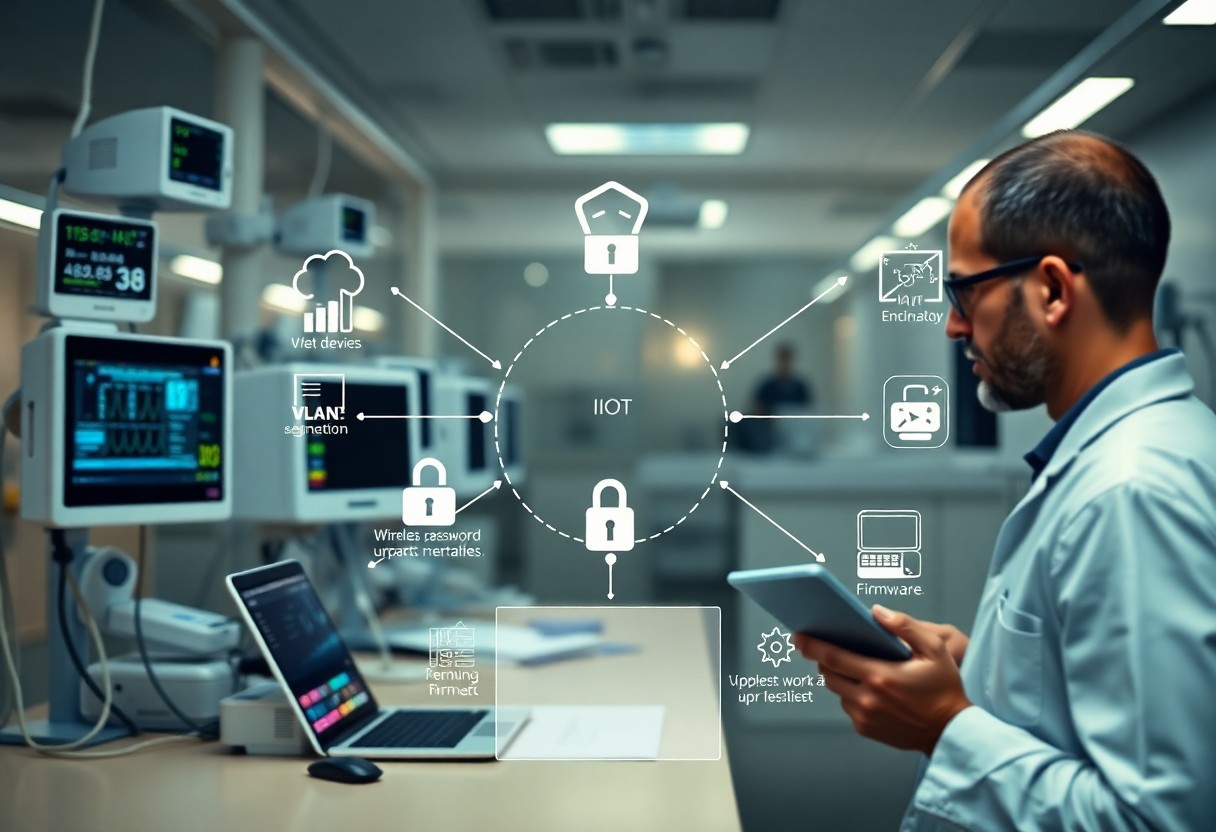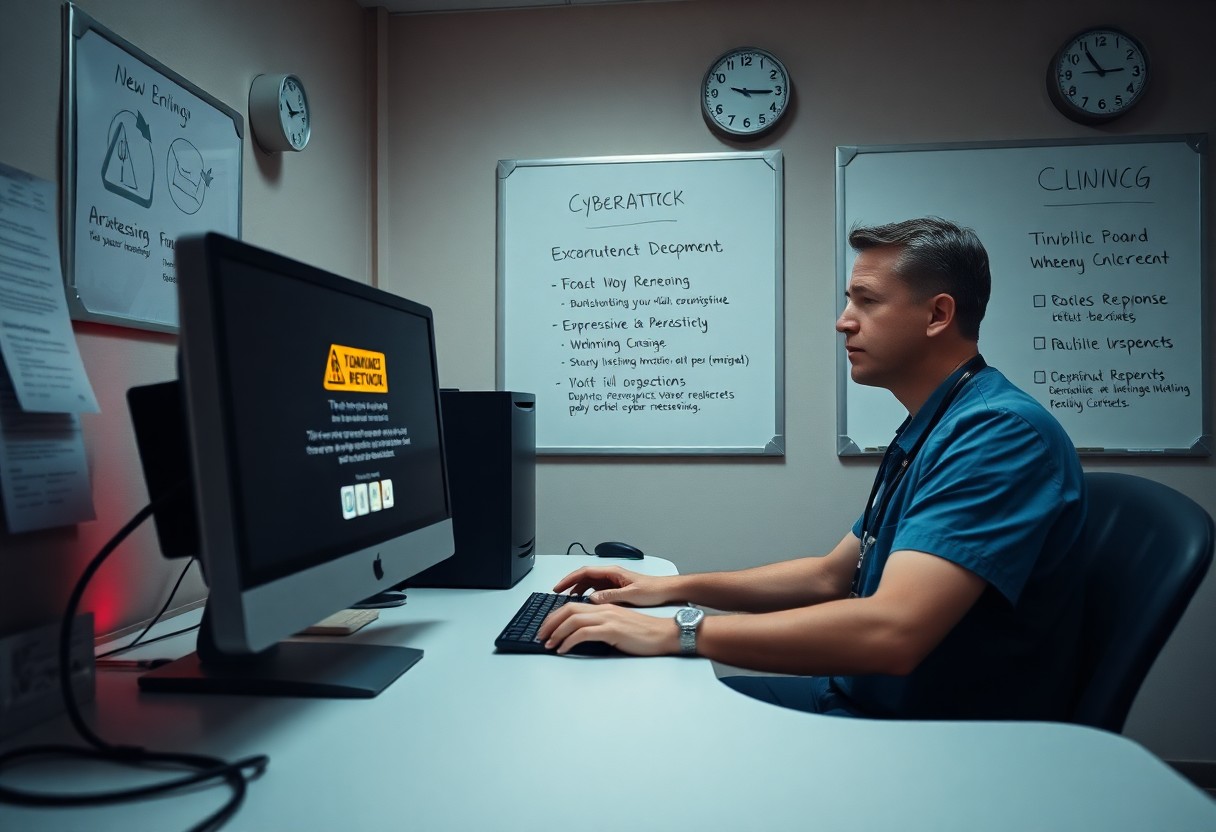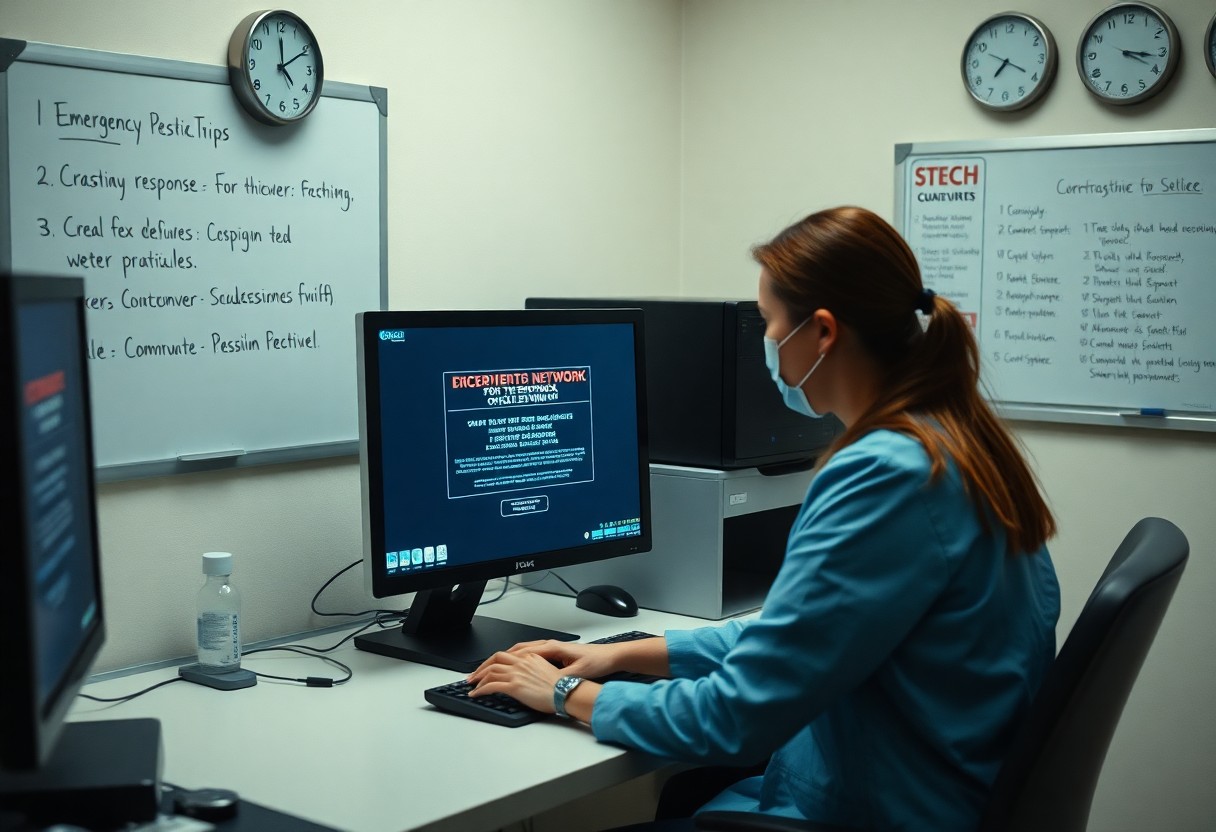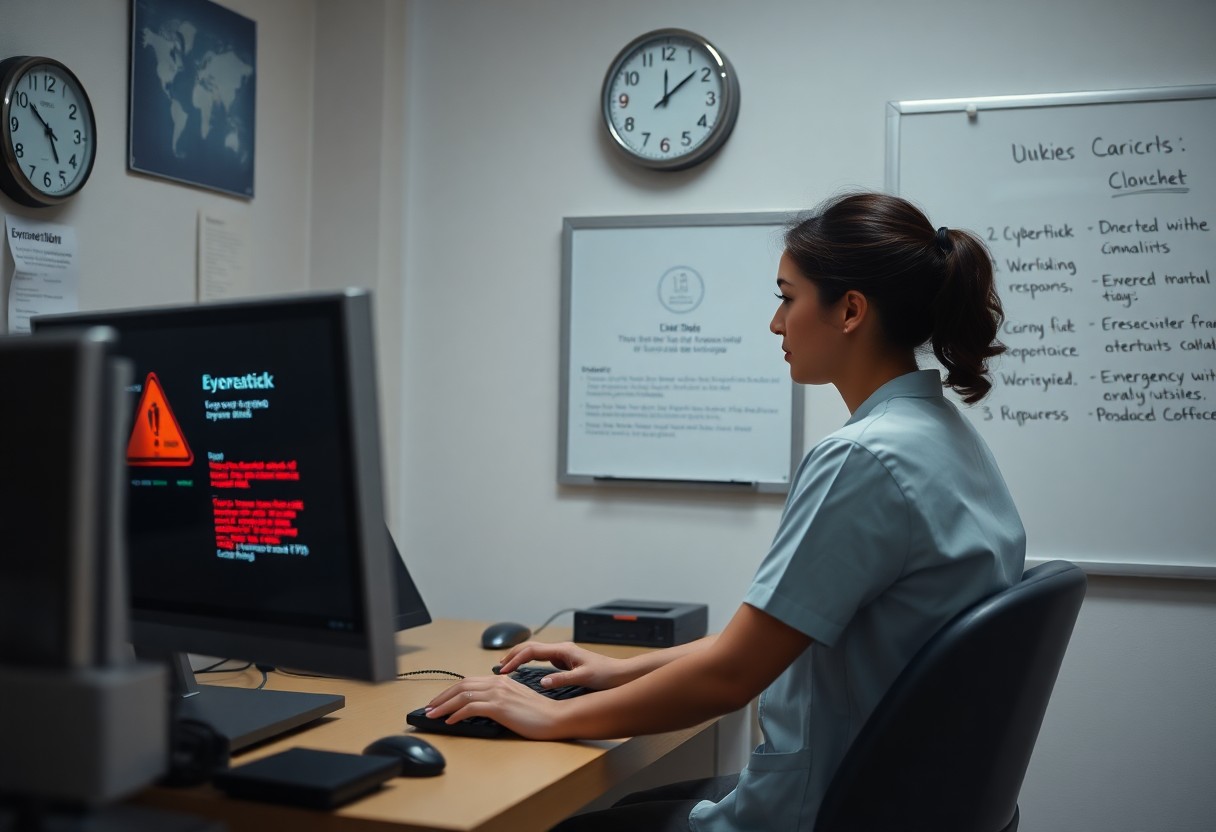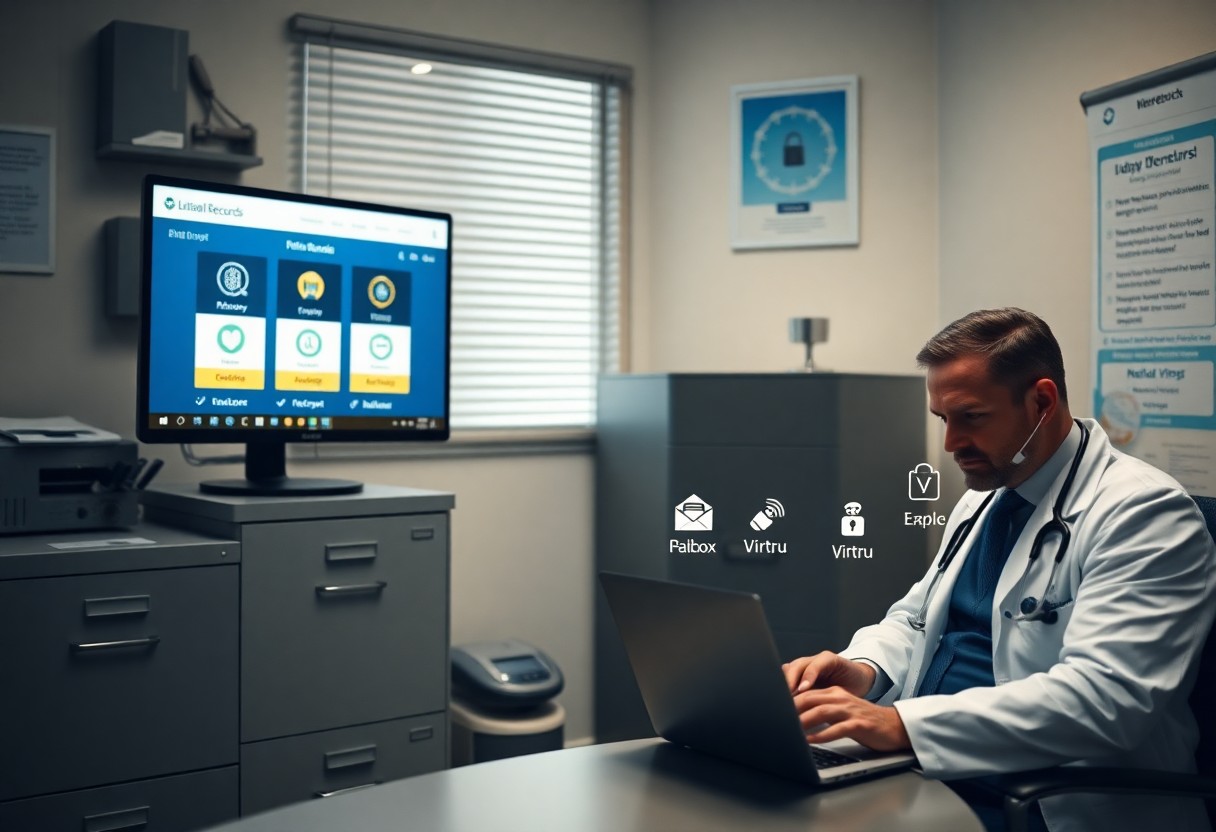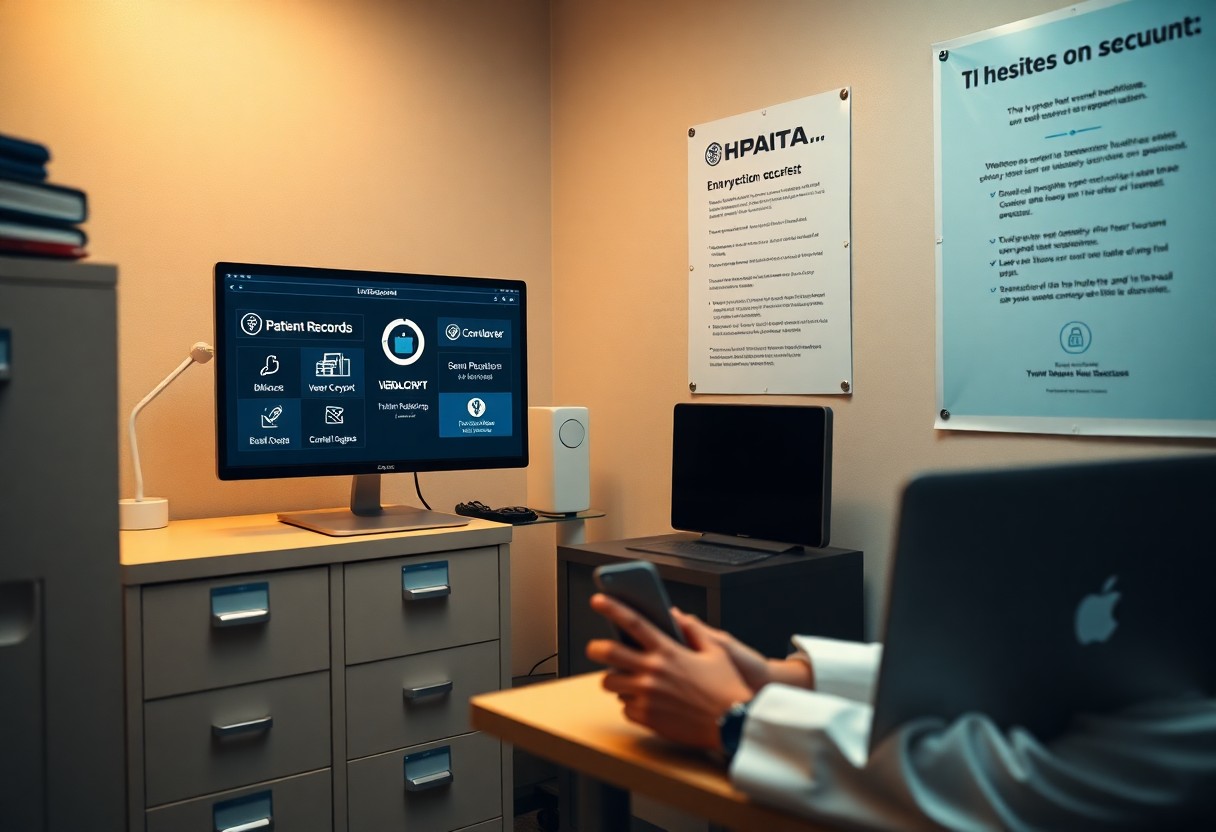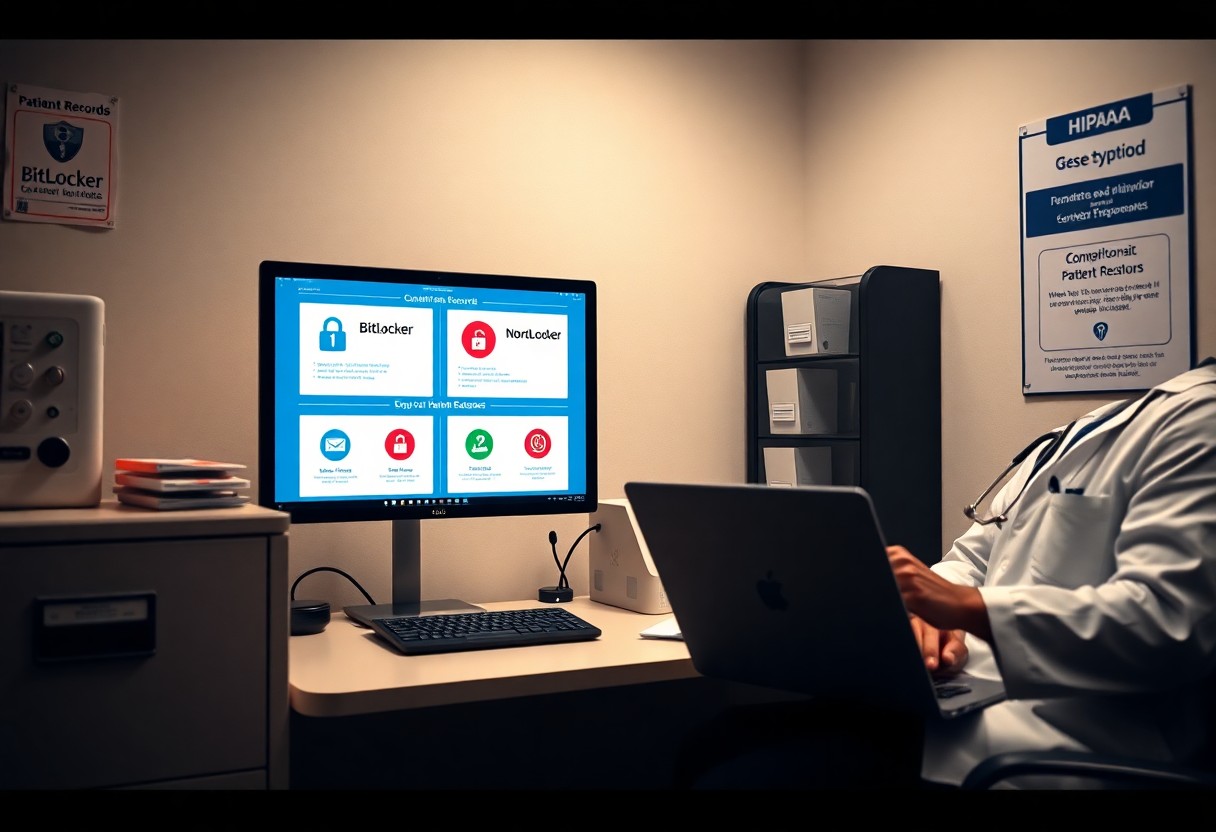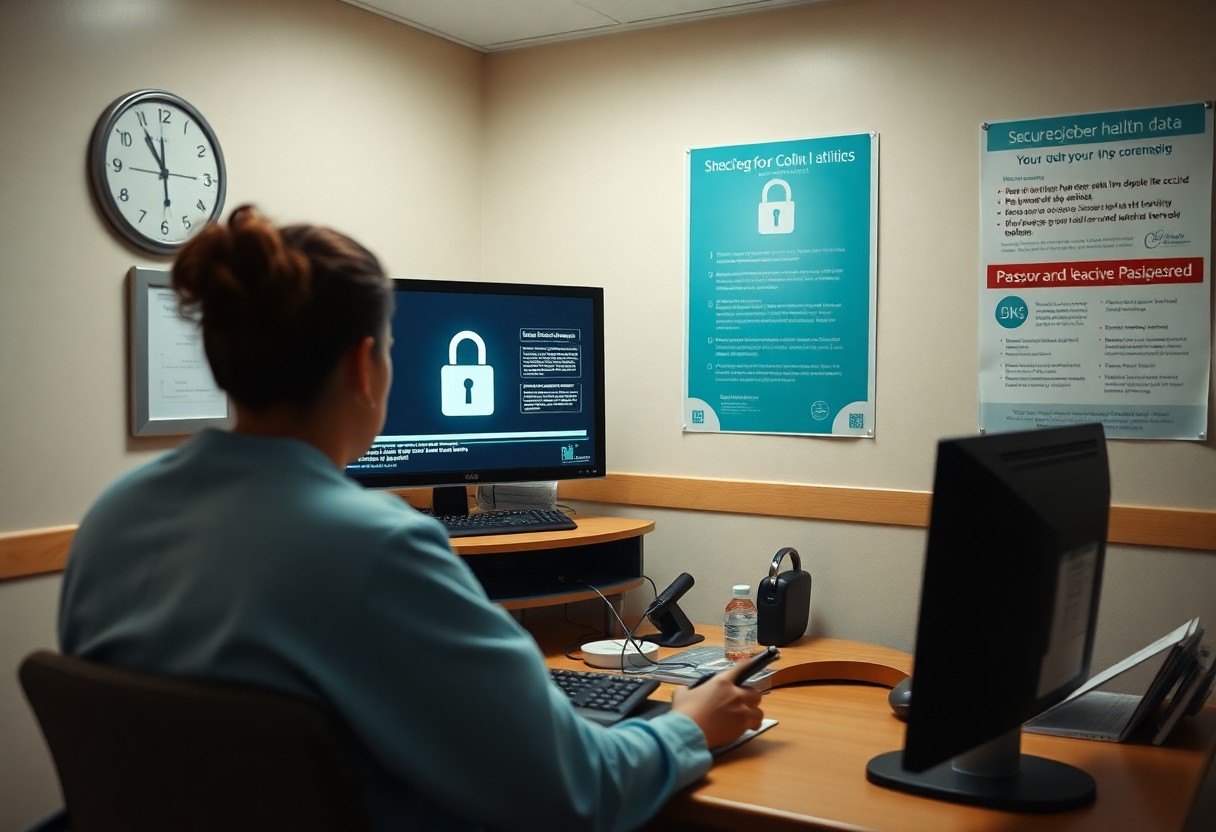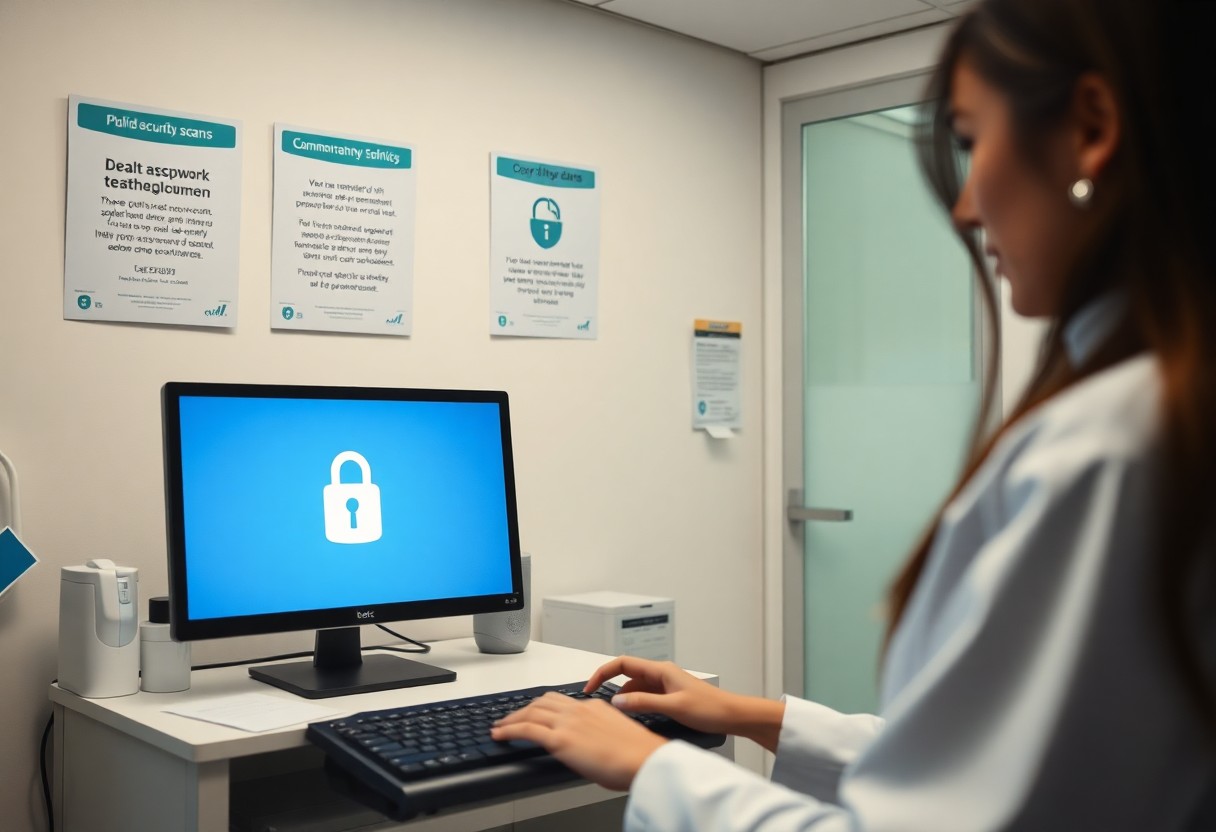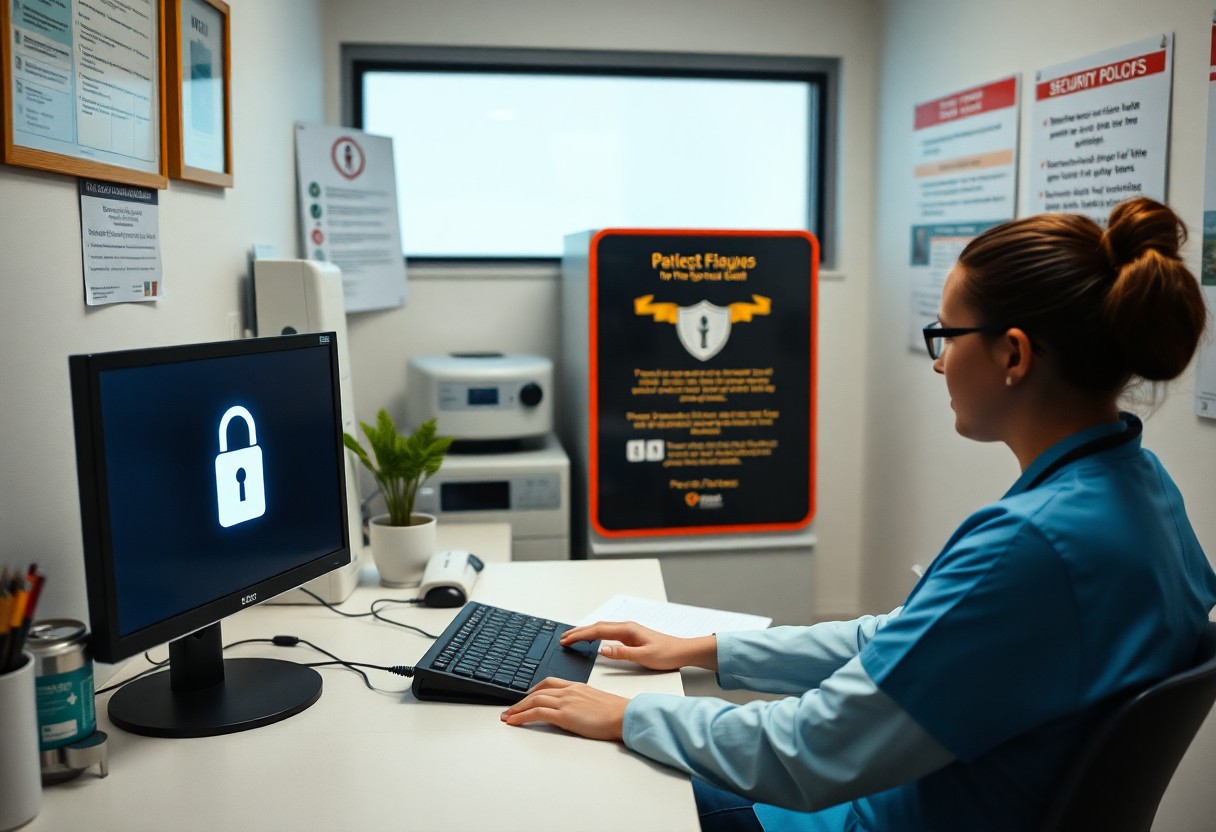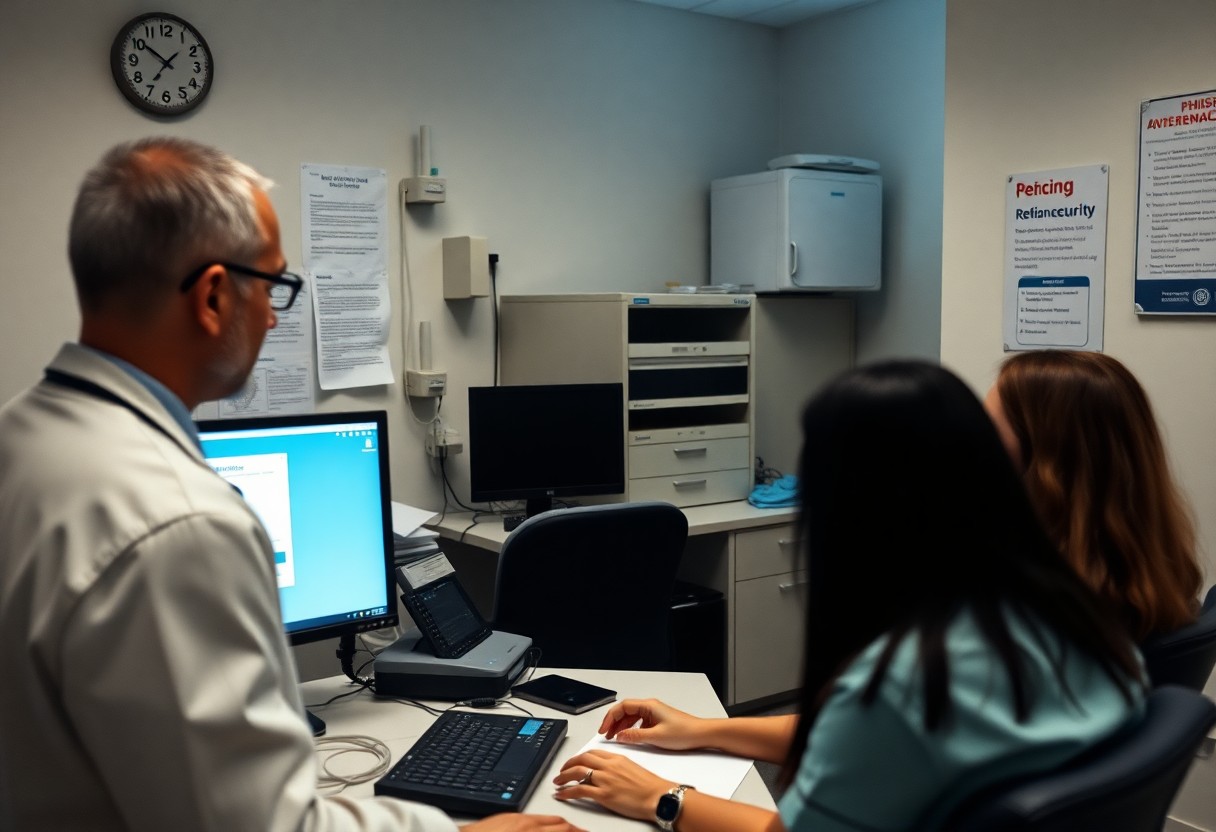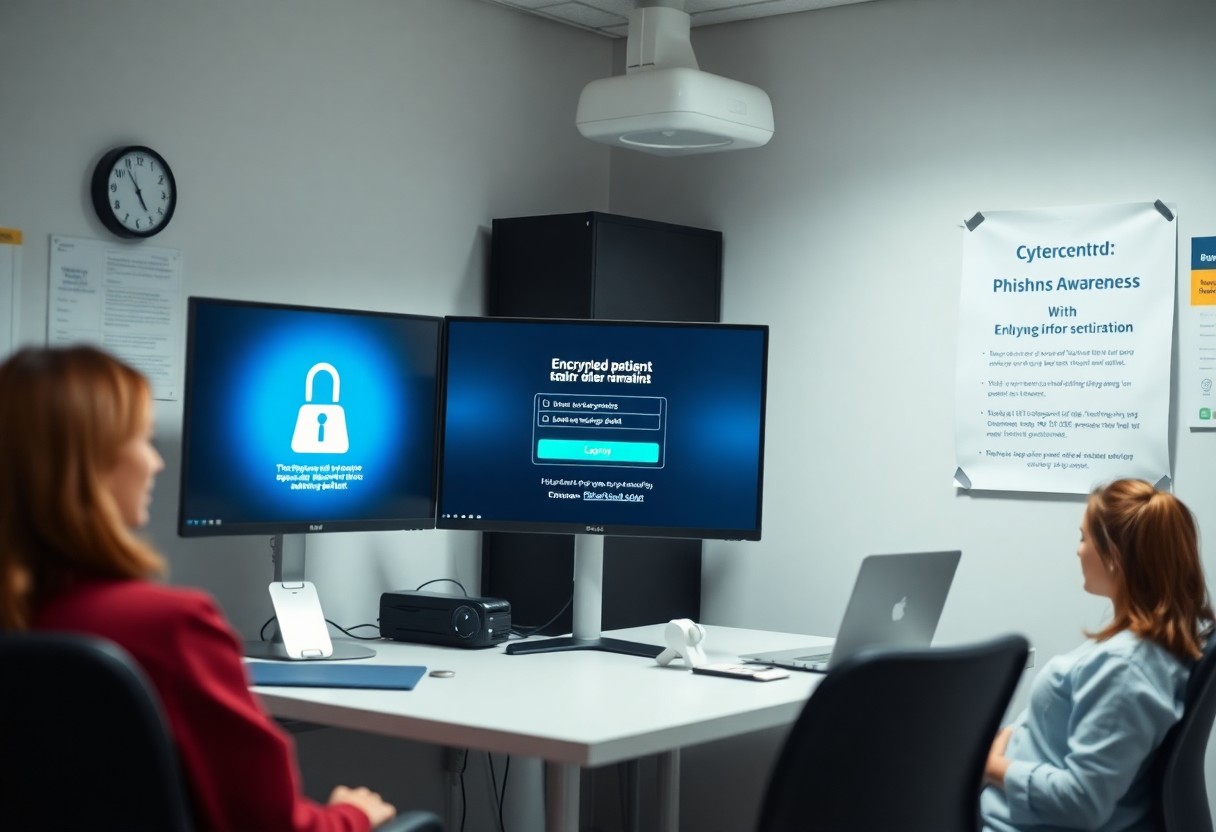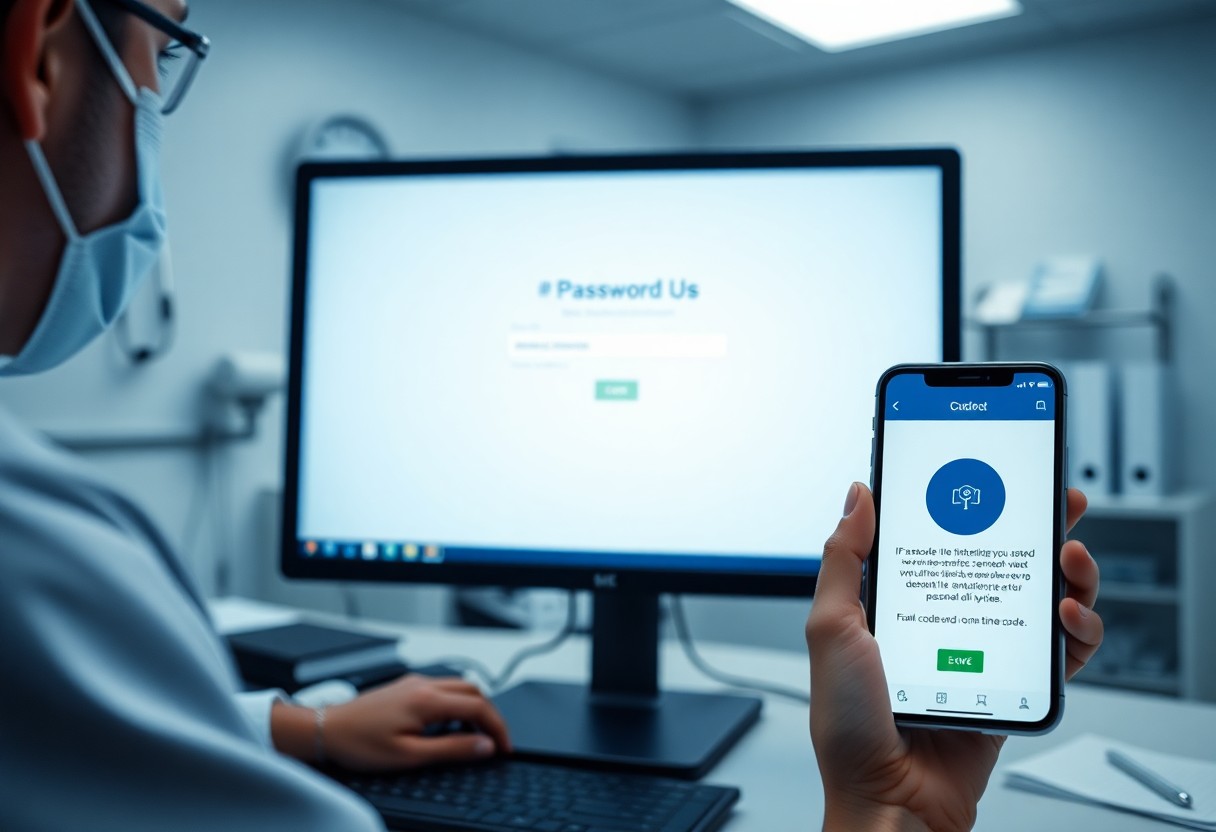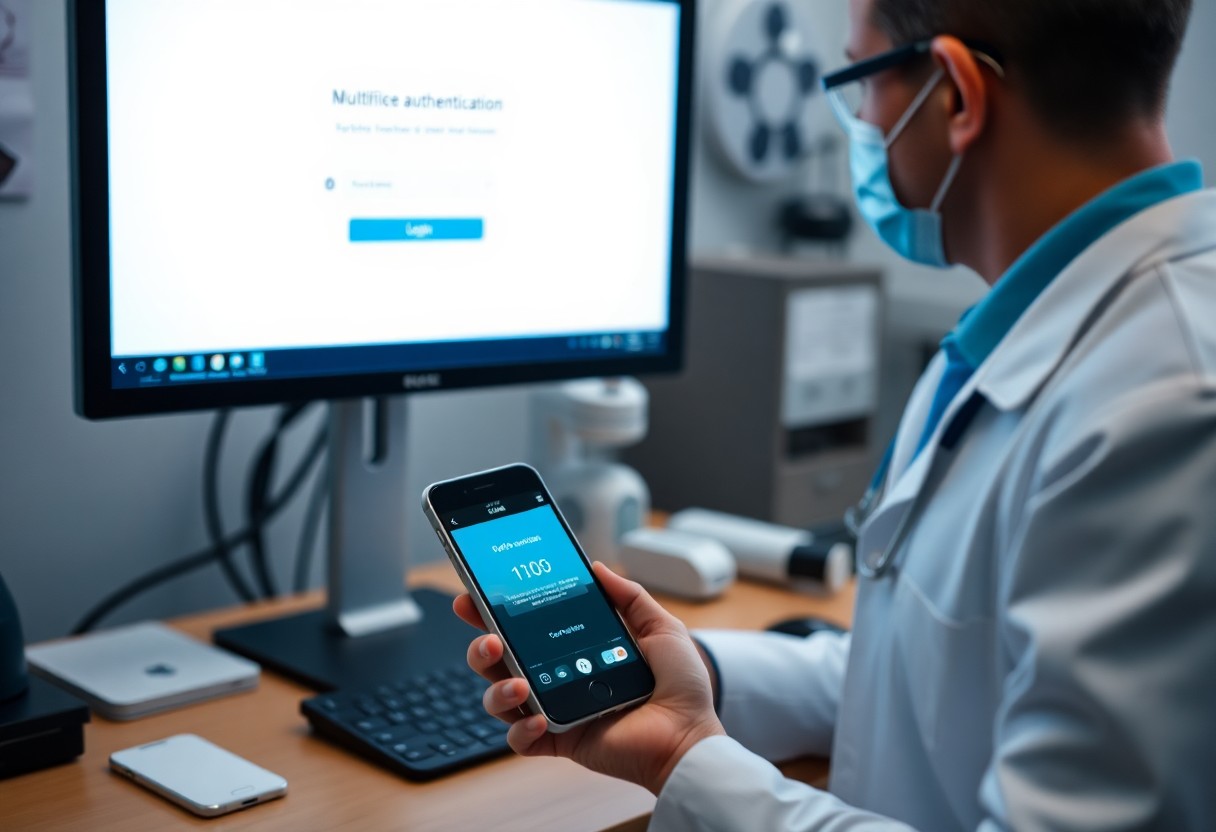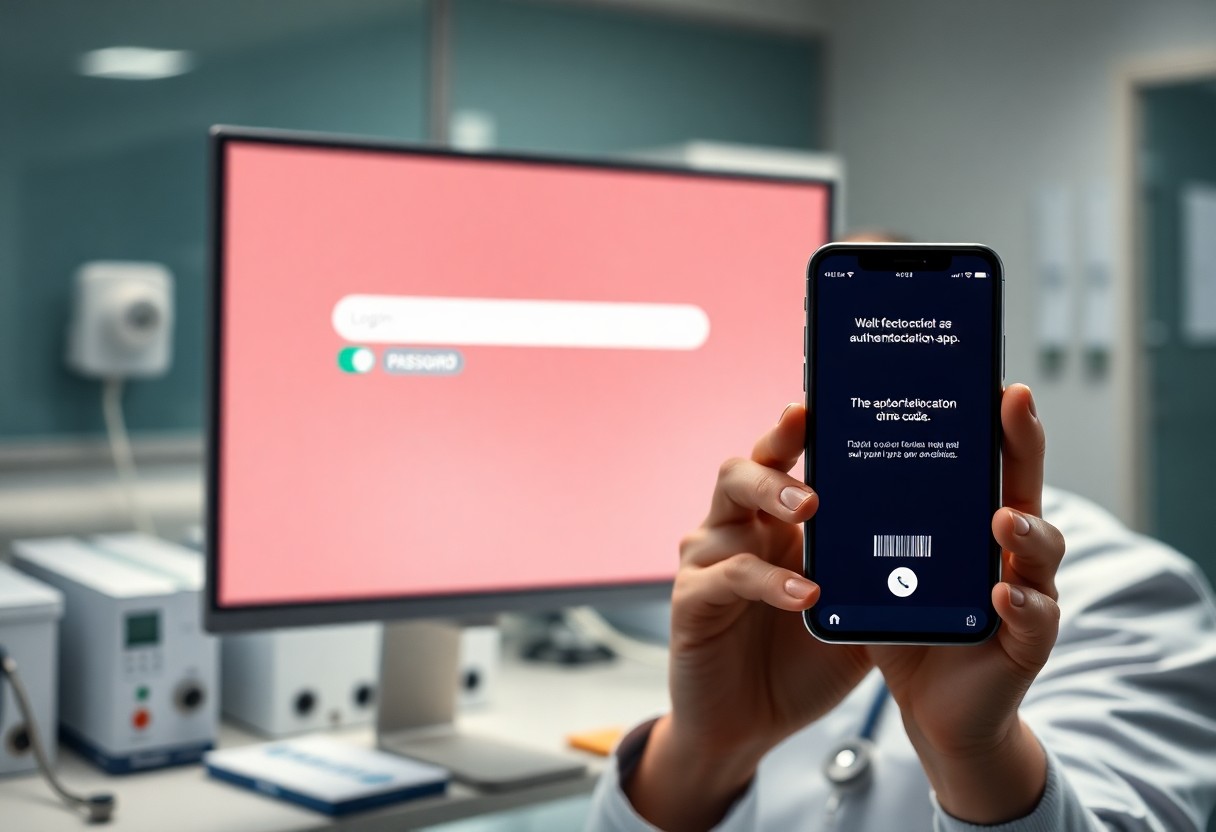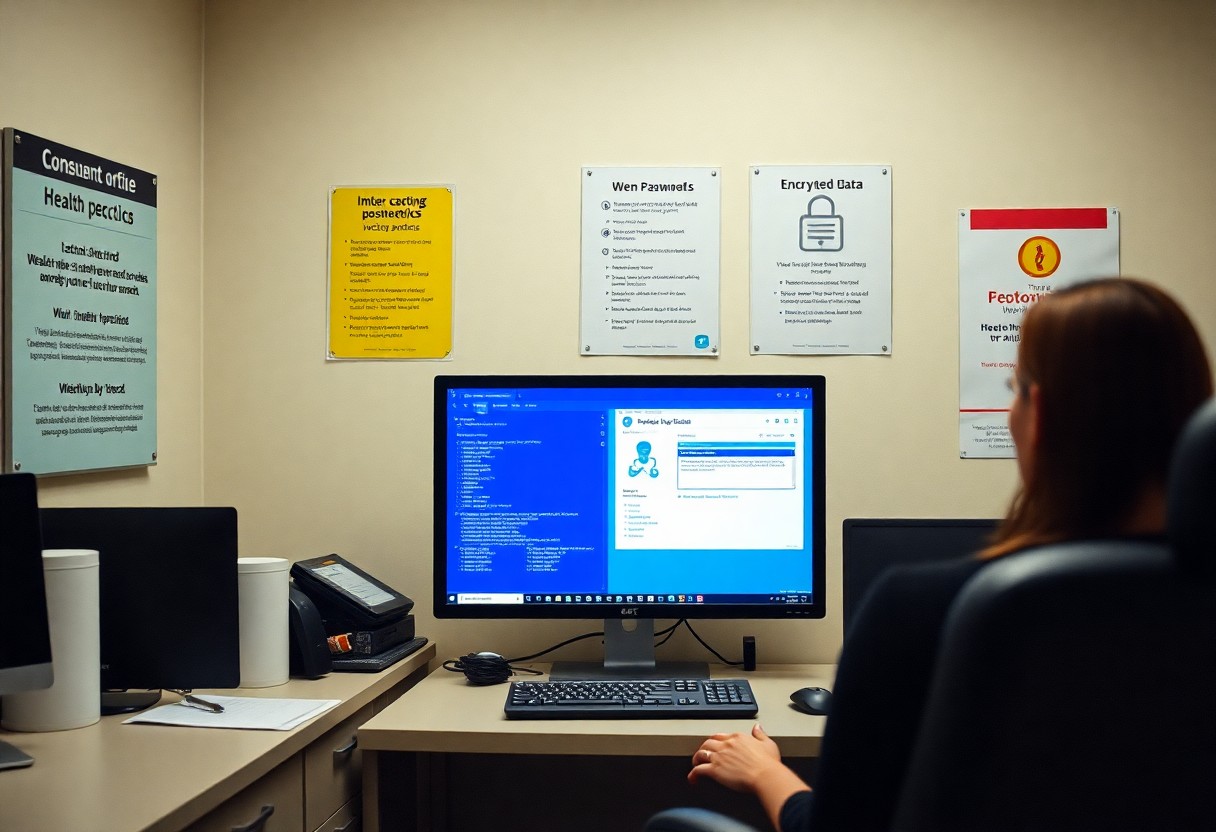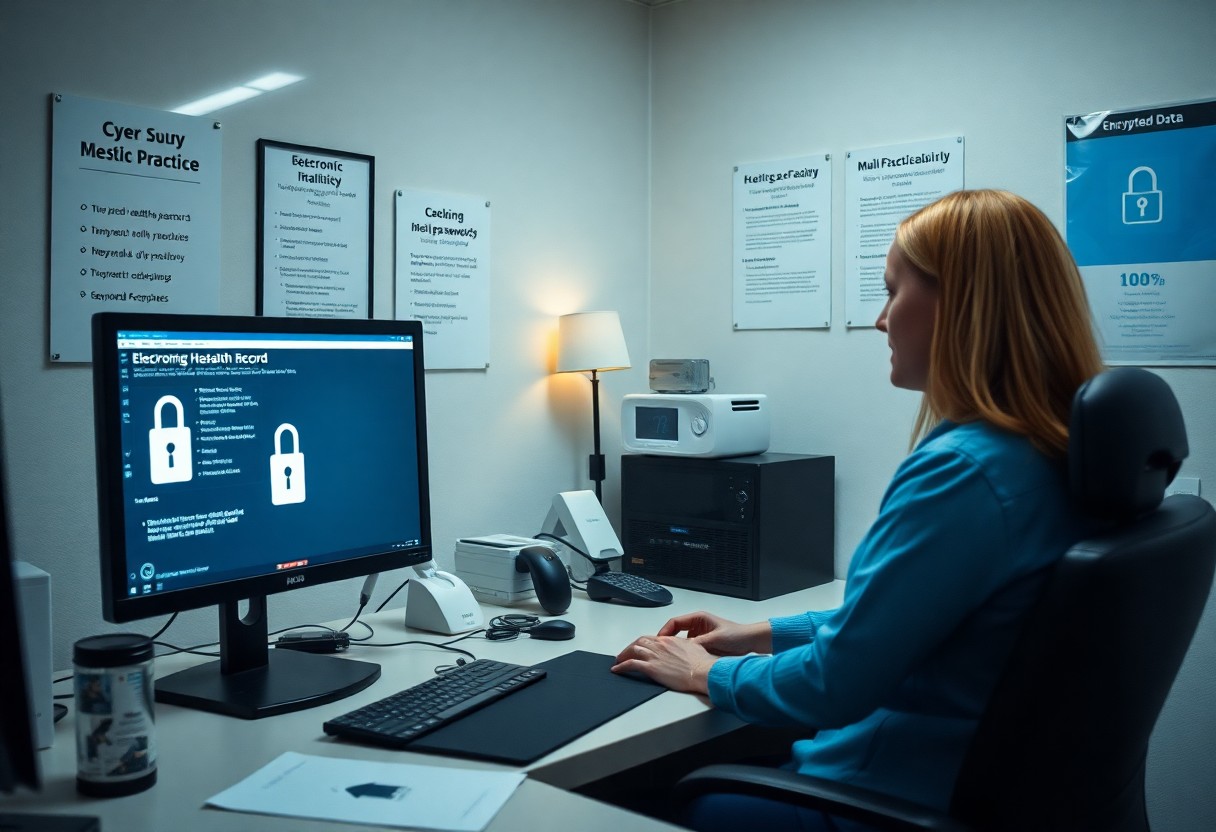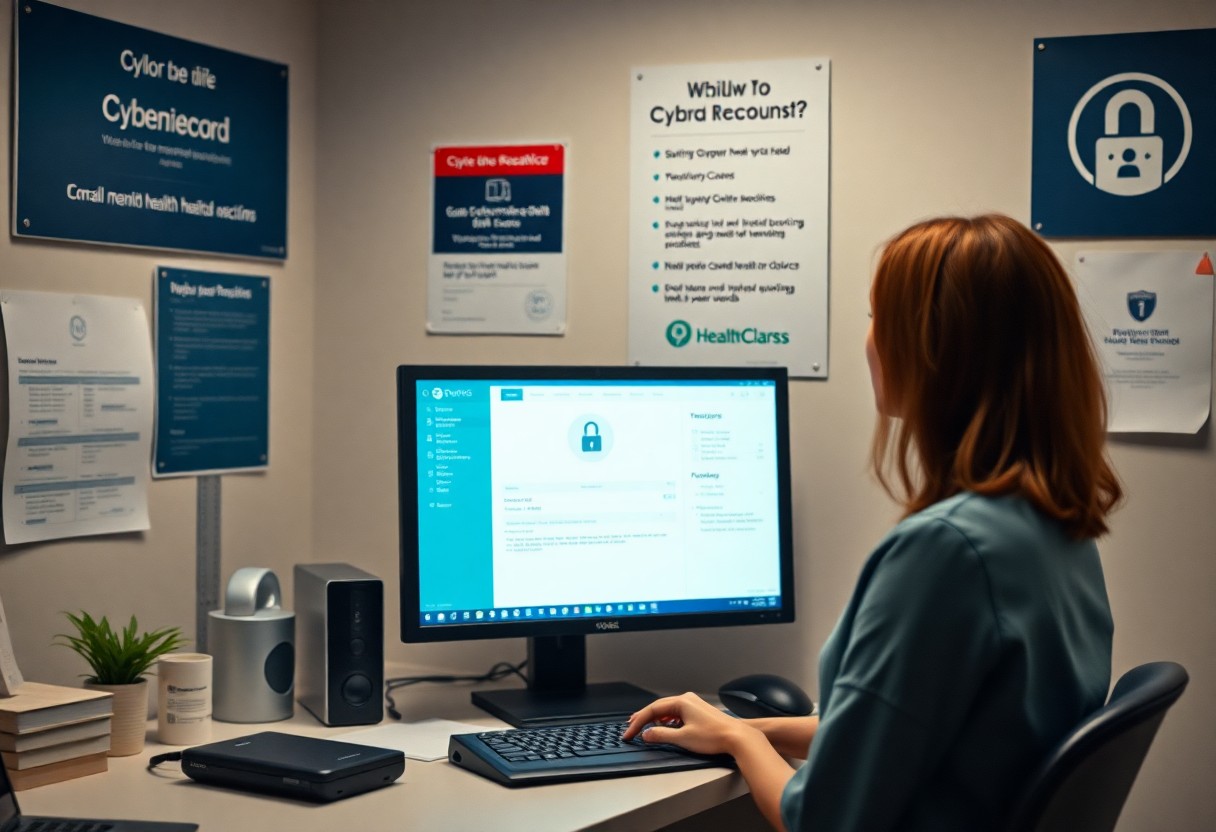Protecting patient data in small medical offices is not optional—it’s a responsibility. I’ve seen firsthand how small medical practices struggle with cybersecurity because they don’t have dedicated IT teams. But ignoring security risks doesn’t make them go away. Patient records contain sensitive details that cybercriminals target, and a single breach can lead to fines, lawsuits, and lost trust. One of the easiest ways to improve security is by enforcing strong passwords and multi-factor authentication on every system.
It sounds basic, but weak passwords are one of the most common ways hackers break in. Another critical step is encrypting patient data at rest and in transit, so even if data is intercepted, it’s unreadable. Regular software updates also play a huge role—outdated systems are easy targets. I always tell clients that cybersecurity isn’t just about preventing attacks but also being ready for them.
That’s why small offices need a data backup plan that includes frequent testing to make sure they can recover lost files. Training employees is just as important; one phishing email can undo every security measure. Small medical offices don’t need enterprise-level solutions, but they do need smart, simple steps to keep patient data safe.
Table of Contents
Patient data is not just information—it’s a valuable asset that requires your diligent protection. I’ve encountered numerous small medical practices grappling with cybersecurity challenges due to the absence of dedicated IT resources. Overlooking these risks can lead to dire consequences, including data breaches that expose sensitive patient details to cybercriminals. Implementing measures like strong passwords, multi-factor authentication, and data encryption is imperative. Additionally, ensure your software is up-to-date and cultivate employee awareness against phishing. By taking these steps, you can actively safeguard your practice and earn the trust of your patients.
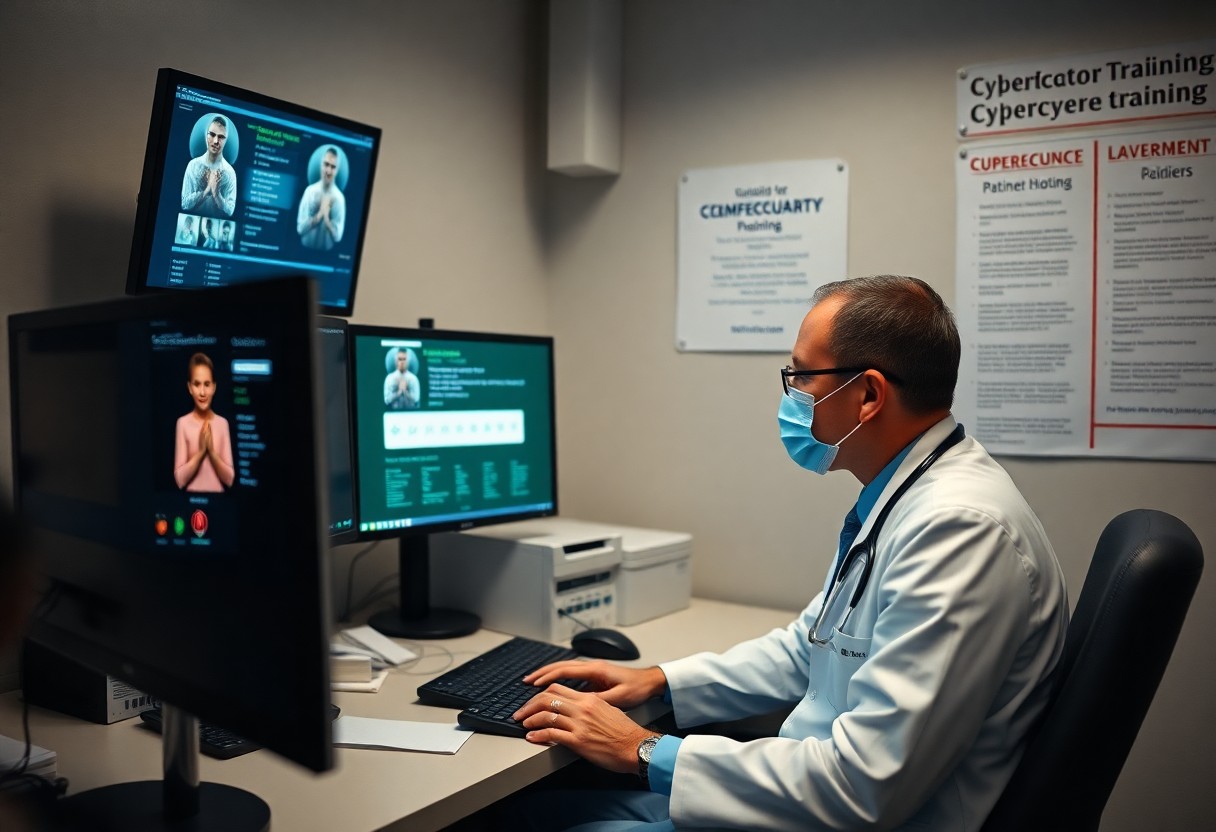
Key Takeaways:
- Cybersecurity is a responsibility: Small medical offices must prioritize patient data protection as part of their operational duties.
- Strong passwords and multi-factor authentication: Implementing these basics is important, as weak passwords are common vulnerabilities exploited by hackers.
- Data encryption: Encrypting patient data both at rest and in transit safeguards it from unauthorized access, making it unreadable if intercepted.
- Regular software updates: Keeping systems up-to-date helps defend against security threats, as outdated software is often targeted.
- Employee training and data backup plans: Educating staff about security risks and having a robust backup strategy ensures that small practices are prepared for potential breaches.
Understanding the Importance of Patient Data Security
Your commitment to safeguarding patient data is more important than ever. As healthcare technology evolves, Safety in a Changing World: Adapt and Innovate becomes a priority. Protecting patient information not only complies with regulations but also reassures patients that their sensitive data is in safe hands. Strengthening data security isn’t just an option; it’s a fundamental responsibility for small medical offices committed to patient care.
The Consequences of Data Breaches
An attack on your data can lead to devastating outcomes, including financial penalties, legal repercussions, and irreversible damage to your practice’s reputation. The trust patients place in you can erode swiftly after a breach, which can take years to rebuild, if it’s even possible. It’s clear that the implications of not prioritizing data security are severe and far-reaching.
The Unique Challenges for Small Medical Practices
After recognizing the importance of data security, I often see small medical practices face challenges that larger organizations may not encounter. Many smaller offices lack the financial resources for dedicated IT teams, leading to gaps in security measures. Moreover, the reliance on outdated systems can increase vulnerability to attacks. Without proactive measures, these offices are prime targets for cybercriminals looking to exploit weaknesses, which can put patient data at significant risk.
Consequently, small medical practices confront distinct hurdles in maintaining data security that larger healthcare facilities often overlook. They lack the resources to implement comprehensive cybersecurity strategies, leaving them vulnerable to breaches. Moreover, staff training in recognizing threats such as phishing is frequently inadequate, making it even more challenging to guard against attacks. Despite these obstacles, I believe that by implementing simple yet effective security measures, small offices can safeguard patient data and foster trust within their communities. One key approach is to adopt cost-effective tools, such as encrypted communication platforms and multi-factor authentication, to enhance cybersecurity for small healthcare practices. Additionally, fostering a culture of awareness through regular staff training can significantly reduce the risk of human error leading to data breaches. By prioritizing these efforts, small medical offices can strengthen their defenses and ensure the protection of sensitive patient information.
Basic Security Measures
Clearly, implementing basic security measures is vital for safeguarding patient data in small medical offices. Without a strong foundation in security practices, the risk of data breaches and potential legal consequences increases significantly. By focusing on simple yet effective strategies, you can enhance your office’s cybersecurity posture and protect sensitive patient information.
Enforcing Strong Passwords
The use of strong passwords is one of the simplest yet most effective steps you can take to secure your systems. I encourage you to implement a policy that requires complex passwords, at least 12 characters long, combining letters, numbers, and symbols. Regularly changing passwords and avoiding sharing them helps to create a more secure environment.
Implementing Multi-Factor Authentication
About multi-factor authentication (MFA), this practice adds an vital layer of security to your organization. By requiring an additional verification step, such as a text message or authentication app, you effectively reduce the likelihood of unauthorized access. Even if a hacker manages to obtain a password, they would still need that second factor to gain entry, making your systems significantly more secure.
Another advantage of MFA is that it not only protects sensitive information but also helps build trust with your patients. Knowing that you are taking security seriously encourages them to feel safe about sharing their personal information. Adopting this measure can be simple and cost-effective, yet its impact on your overall security posture can be profound, making it a key element of your cybersecurity strategy.
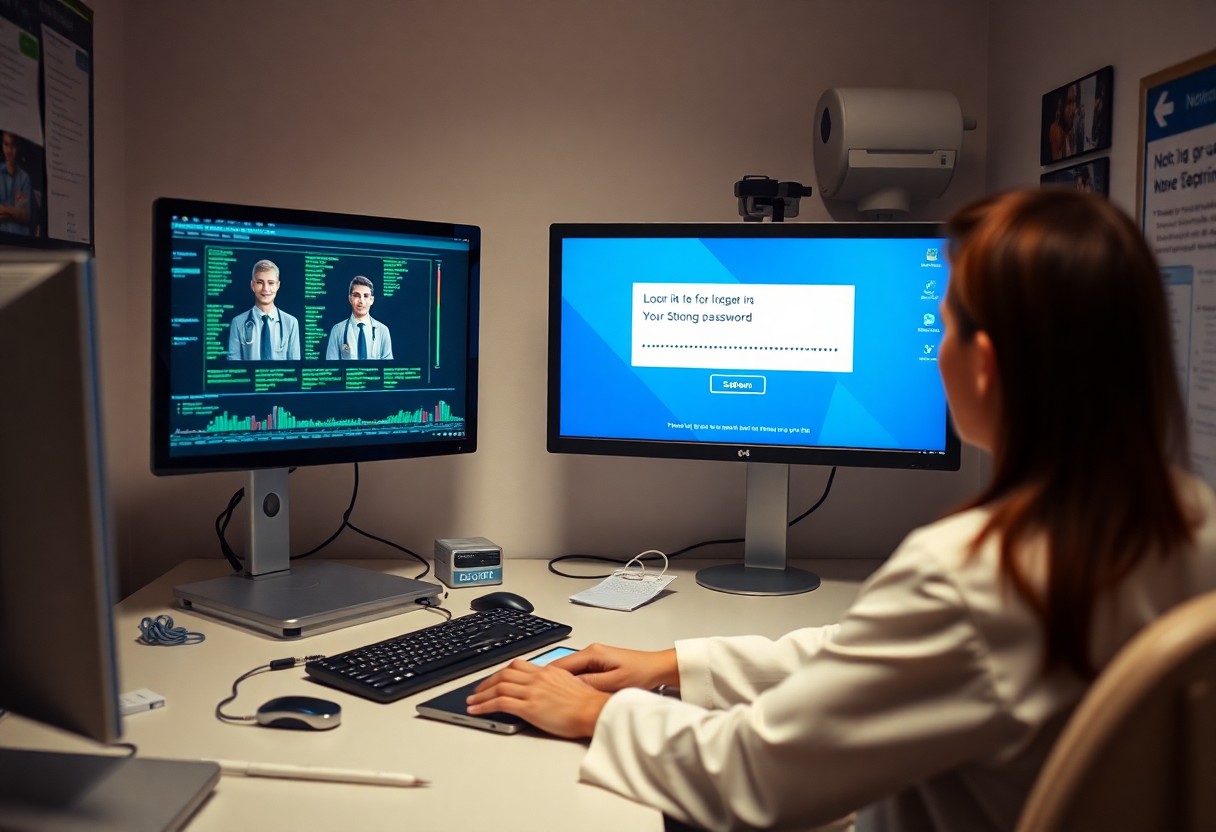
Data Encryption Practices
Keep in mind that data encryption is a vital step in protecting patient information. By effectively implementing encryption practices, you can safeguard sensitive data against unauthorized access, making it significantly harder for cybercriminals to exploit your systems. Whether it’s data at rest or in transit, the more layers of security you have in place, the better off your practice will be.
Encrypting Data at Rest
With data at rest, it’s vital to encrypt any stored patient information, such as medical records or billing details. By applying strong encryption algorithms, you ensure that even if someone gains access to your storage system, they won’t be able to read the data without the proper decryption key. This measure is particularly important for safeguarding sensitive information against internal threats and breaches.
Encrypting Data in Transit
Below is where encrypting data in transit becomes vital for secure communication. When your systems send or receive information, such as during online consultations or billing transactions, it is vital to protect that data from interception. Without effective encryption, data packets can be easily accessed by cybercriminals, putting your patients’ sensitive information at serious risk.
Encrypting data in transit ensures that any data sent over the internet is encoded and unreadable to unauthorized users. This protects sensitive communications between your office and third parties, such as labs or pharmacies. Additionally, incorporating protocols like TLS (Transport Layer Security) can help secure your emails and any web-based systems you use, ensuring that patient information remains confidential during transmission. Taking these steps not only protects patient trust but also shields your practice from potential legal repercussions associated with data breaches.
The Role of Software Updates
Despite the overwhelming demand on small medical offices, keeping software updated should never be overlooked. Regular updates not only patch security flaws, but they also enhance performance and introduce new features that can streamline operations. By prioritizing these updates, you can minimize the risk of cyber threats targeting vulnerable, outdated software systems.
Importance of Regular Updates
Among the simplest yet most effective practices in cybersecurity is ensuring that all software is updated regularly. This routine measure helps address known security vulnerabilities and decreases the chances of unauthorized access. An updated system is less attractive to cybercriminals, as they often seek easy targets with outdated protections.
Identifying and Addressing Vulnerabilities
Updates are crucial not only for improving functionality but also for identifying and addressing vulnerabilities present in your systems. By installing the latest patches, you reinforce your defenses against potential breaches that could expose sensitive patient data. Frequent updates enable your software to counteract emerging threats, keeping your practice and patient information secure.
It’s important to establish a regular schedule for software updates within your practice. This practice should involve not only the operating systems but also applications that store or handle patient data. By diligently applying updates, you enhance your defenses against significant risks such as data theft or ransomware attacks, which could compromise your reputation as a trusted healthcare provider. Act early and often—update your software regularly and fortify your security posture.
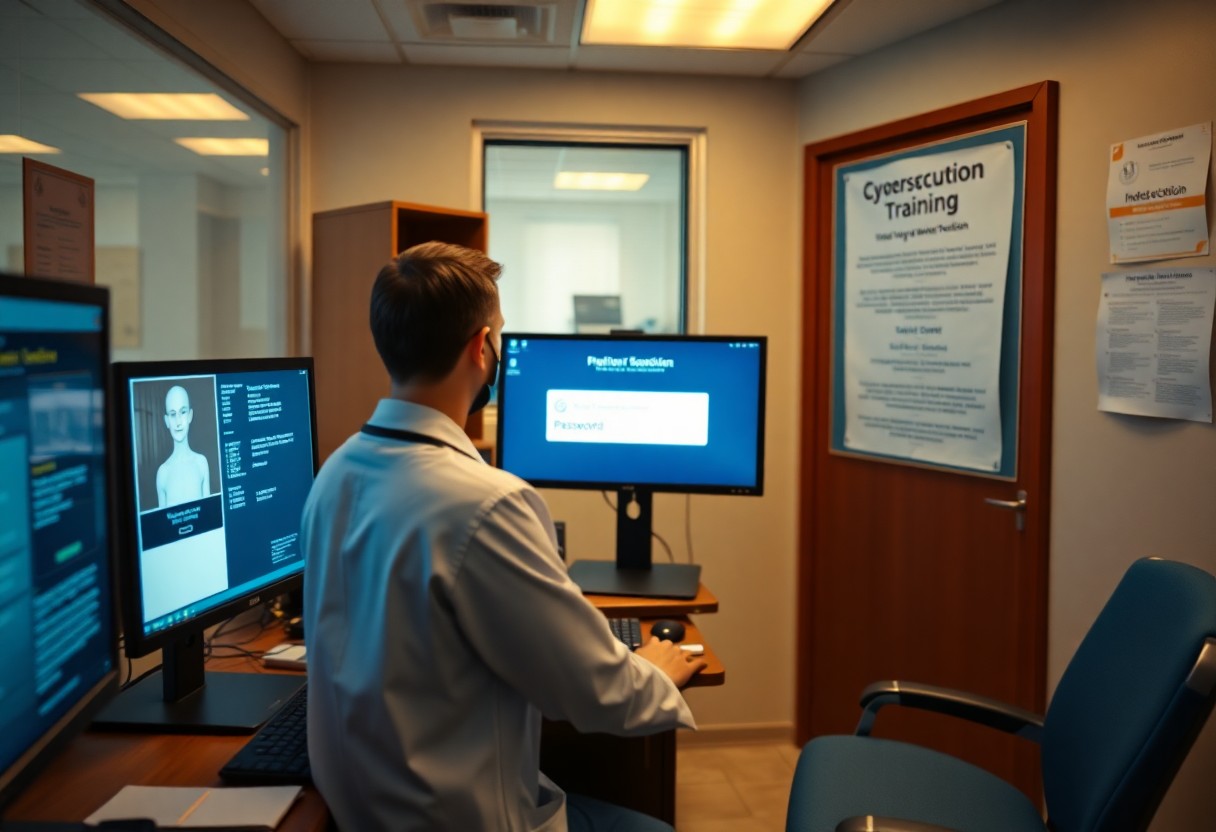
Developing a Data Backup Plan
Now that you understand the importance of protecting patient data, developing a data backup plan is important to ensure you can recover your information in the event of a cyberattack or data loss. A solid backup plan minimizes downtime and helps maintain your practice’s reputation, allowing you to continue providing care to your patients without significant disruption. It’s vital to implement a strategy that not only incorporates regular backups but also includes specific protocols for data recovery.
Creating a Backup Strategy
Creating a backup strategy involves determining what data needs to be backed up, how frequently backups should occur, and where the data will be stored. I recommend using a combination of local storage and cloud solutions to ensure that your data is secure yet accessible. This way, you can safeguard important records while minimizing the risk of data loss. Document your procedures clearly so that your entire team understands how to implement the plan efficiently.
Testing Backup Effectiveness
Any backup plan is only as effective as its execution, so it’s important to routinely test its effectiveness. I suggest scheduling regular tests to verify that you can restore data accurately and quickly when needed. Without testing, you could be left vulnerable if an actual backup situation arises, as you might discover that your backups are incomplete or corrupted.
In fact, testing your backup effectiveness can reveal significant issues that might compromise your security. Regular tests help ensure that your backups are complete, accessible, and correctly formatted to facilitate quick recovery. If you encounter problems, you can address them before an emergency arises, preventing potential data loss and turmoil in your practice. Ultimately, taking proactive steps to ensure backups work as intended safeguards your patients’ information and your practice’s integrity.
Employee Training and Awareness
After establishing robust cybersecurity measures, I cannot stress enough the importance of employee training. Your staff is often the first line of defense against cyber threats. Regular training sessions not only help them understand security protocols but also elevate their awareness of the ever-changing landscape of cyber risks. A well-informed team can significantly reduce vulnerabilities and contribute to a secure environment that protects patient data.
Recognizing Phishing Attempts
Alongside technical safeguards, equipping your team to identify phishing attempts is necessary. I encourage my clients to conduct regular workshops that showcase real-life examples of phishing emails and scam tactics. Making sure everyone can spot these threats will ultimately make your practice more resilient against attacks.
Building a Culture of Security
Below all these efforts lies the need for a culture of security within your office. Encouraging open discussions about cybersecurity creates an environment where everyone feels responsible for safeguarding patient data. When security becomes a shared value, your team will be more vigilant and proactive in recognizing threats.
Also, fostering a culture of security means incorporating best practices into daily operations. I urge you to create an atmosphere of accountability where employees feel safe to report suspicious activities without fear of repercussions. Periodic reminders about the importance of cybersecurity, along with incentives for practicing good habits, can enhance engagement. By cultivating this mindset, your entire team becomes a vital partner in protecting sensitive patient information and maintaining trust.
To wrap up
Upon reflecting, I realize that protecting patient data in small medical offices is an vital duty, not just a choice. Cybersecurity threats are ever-present, and the stakes are high with the sensitive nature of patient information. Implementing basic yet effective measures like strong passwords, encryption, and regular updates can significantly enhance your security posture. Additionally, preparing for potential breaches through backup plans and employee training ensures you’re ready for any situation. Small practices may not need complex solutions, but with smart, straightforward steps, you can safeguard your patients’ trust and your practice’s integrity.
FAQ
Q: Why is protecting patient data important for small medical offices?
A: Protecting patient data is vital because it contains sensitive information that can be targeted by cybercriminals. A data breach can lead to serious consequences, including legal fines, lawsuits, and loss of trust from patients. Small medical offices have a responsibility to safeguard this data to maintain confidentiality and comply with regulations.
Q: What are the common cybersecurity challenges faced by small medical practices?
A: Small medical practices often lack dedicated IT teams and resources, making them vulnerable to cyber threats. They may struggle with outdated software, weak password practices, and insufficient employee training. These challenges can lead to increased risk of breaches if not properly addressed.
Q: What steps can small medical offices take to enhance their cybersecurity?
A: Small medical offices can take several straightforward steps to enhance security:
1. Enforce strong passwords and implement multi-factor authentication for all systems.
2. Encrypt patient data both at rest and in transit to make it unreadable if intercepted.
3. Keep software up-to-date to close potential vulnerabilities.
4. Regularly back up data and test recovery plans.
5. Provide ongoing training for employees to recognize phishing and other social engineering attacks.
Q: Why are strong passwords important in safeguarding patient data?
A: Strong passwords are vital because they serve as the first line of defense against unauthorized access. Weak passwords are often the easiest way for hackers to gain entry into systems. Using complex passwords that include a mix of letters, numbers, and symbols can significantly reduce the likelihood of breaches.
Q: How does encryption help in protecting patient data?
A: Encryption is a technique that converts data into a coded format that can only be read with a decryption key. By encrypting patient data both at rest (stored data) and in transit (data being sent), even if it is intercepted or accessed by an unauthorized party, it remains unreadable and thus helps protect patient confidentiality.
Q: What role do software updates play in cybersecurity for small practices?
A: Regular software updates are vital for maintaining security because they often include patches for vulnerabilities that could be exploited by cybercriminals. Failing to update software can leave systems open to attacks, making them easy targets for hackers looking for known weaknesses.
Q: How can employee training reduce cybersecurity risks in small medical offices?
A: Training employees is significant because human error is a common factor in many data breaches. By educating staff on recognizing phishing attempts and promoting safe internet practices, small medical offices can strengthen their overall security posture. One well-informed employee can prevent a breach by not clicking on a malicious link or providing sensitive information to a scammer.









